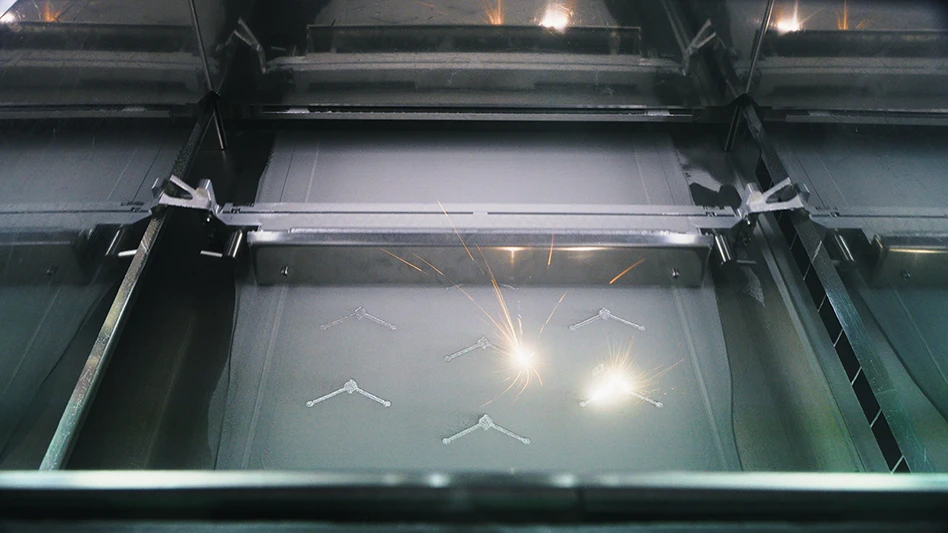 In the Active Book, the four slots close in around the nerve roots like the pages of a book.Engineers have developed a new type of micro-chip muscle stimulator implant that enables people with paraplegia to exercise their paralyzed leg muscles.
In the Active Book, the four slots close in around the nerve roots like the pages of a book.Engineers have developed a new type of micro-chip muscle stimulator implant that enables people with paraplegia to exercise their paralyzed leg muscles.
It is the first time that researchers have developed a device that is small enough for implanting into the spinal canal, incorporating the electrodes and muscle stimulator in one unit. The implant is the size of a child’s fingernail.
The Engineering and Physical Sciences Research Council (EPSRC) project is being led by Professor Andreas Demosthenous from University College London and includes engineers from Freiburg University and the Tyndall Institute in Cork.
“The work has the potential to stimulate more muscle groups than is currently possible with existing technology because a number of these devices can be implanted into the spinal canal,” says Professor Andreas Demosthenous. “Stimulation of more muscle groups means users can perform enough movement to carry out controlled exercise such as cycling or rowing.”
The devices could also be used for a wide range of restorative functions, such as stimulating bladder muscles to help overcome incontinence and stimulating nerves to improve bowel capacity and suppress spasms.
The research team has overcome previous limitations by micro-packaging everything into one tiny unit. The latest laser processing technology has been used to cut tiny electrodes from platinum foil. These are then folded into a 3D shape, which looks like the pages of a book, earning the device the name of the Active Book. The pages close in around the nerve roots. They are then micro-welded to a silicon chip, which is hermetically sealed to protect against water penetration, which can lead to corrosion of the electronics.
The innovation gains praise from Science Minister, David Willetts, who says, “This tiny implant has the potential to make a real difference to the lives and long-term health of people with paraplegia in the U.K. and around the world.”
Although electrical stimulation of leg muscles has been used for some time, it is usually done by attaching electrodes to the outside of the legs, and then connecting the electrodes to an external stimulator. This is too time consuming to be used every day so few people with spinal cord injury continue with this method despite the clear health benefits.
Now, electrical stimulation of nerve roots in the spinal canal can be carried out using implanted electrodes and an implanted stimulator connected by a cable. This latest research is the first to combine the electrodes and muscle stimulator in one unit so that more nerves can be stimulated and better function achieved.
The Active Book will be made available for pilot studies sometime next year. The project is co-led by Professor Nick Donaldson of University College London.
About EPSRC
Engineering and Physical Sciences Research Council (EPSRC) is the main U.K. government agency for funding research and training in engineering and the physical sciences, investing more than £850 million a year in a broad range of subjects – from mathematics to materials science, and from information technology to structural engineering.
About UCL
Founded in 1826, University College London (UCL) was the first English university established after Oxford and Cambridge, the first to admit students regardless of race, class, religion, or gender, and the first to provide systematic teaching of law, architecture, and medicine. UCL is among the world’s top universities, as reflected by performance in a range of international rankings and tables.
Material for this article was from https://www.ukri.org/councils/epsrc/

Explore the January February 2011 Issue
Check out more from this issue and find your next story to read.
Latest from Today's Medical Developments
- HERMES AWARD 2025 – Jury nominates three tech innovations
- Vision Engineering’s EVO Cam HALO
- How to Reduce First Article Inspection Creation Time by 70% to 90% with DISCUS Software
- FANUC America launches new robot tutorial website for all
- Murata Machinery USA’s MT1065EX twin-spindle, CNC turning center
- #40 - Lunch & Learn with Fagor Automation
- Kistler offers service for piezoelectric force sensors and measuring chains
- Creaform’s Pro version of Scan-to-CAD Application Module





